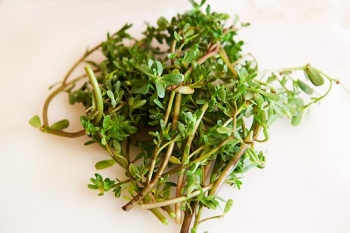Other names : Portulaca oleracea, common purslane, verdolaga, pigweed, little hogweed, Pursley, Moss rose, Ma Chi Xian
Although the FDA classifies purslane as a broad-leaved weed, it's a popular vegetable and herb in many other countries, including China, Mexico, and Greece.
see also : Claytonia Perfoliata
Special Precautions of Purslane
- do not confuse with Brooklime which is called Water Purslane.
- Use is contraindicated during pregnancy and for those with cold and weak digestion.
Benefits and uses of Purslane are
- Cardiovascular disease : Purslane has the highest amount of heart-healthy omega-3 fats of any edible plant, according to researchers at the University of Texas at San Antonio. Purslane leaves (which can be eaten as a cooked vegetable) contain more omega-3 fatty acids than any other edible plant, making them good for improving brain and cardiovascular function.
- Cancer : Researchers discovered that purslane contains between 10 and 20 times more of the cancer-inhibiting antioxidant, melatonin, than any other fruit or vegetable tested! And a rare subclass of Homoisoflavonoids, from the plant, showed in vitro cytotoxic activities towards four human cancer cell lines
- Betacyanins isolated from Portulaca oleracea improved cognition deficits in aged mice.
- Purslane is a clinically effective treatment for oral lichen planus
- its leaves are used to treat insect or snake bites on the skin, boils, sores, pain from bee stings, bacillary dysentery, diarrhea, hemorrhoids, postpartum bleeding, and intestinal bleeding
